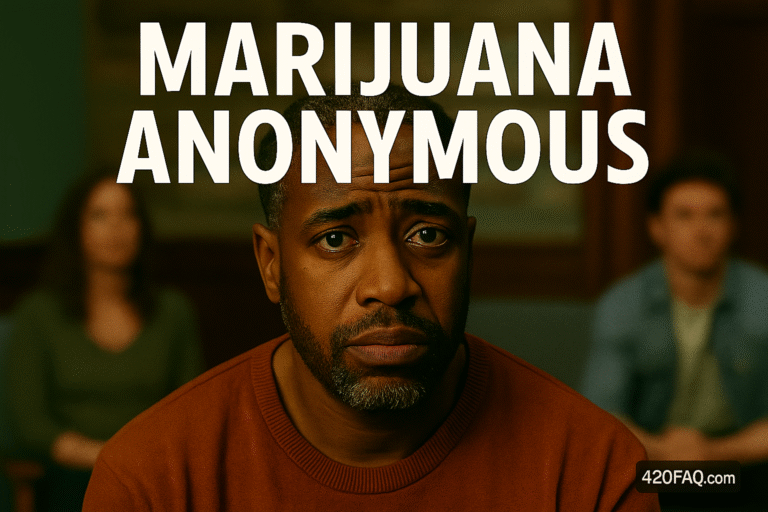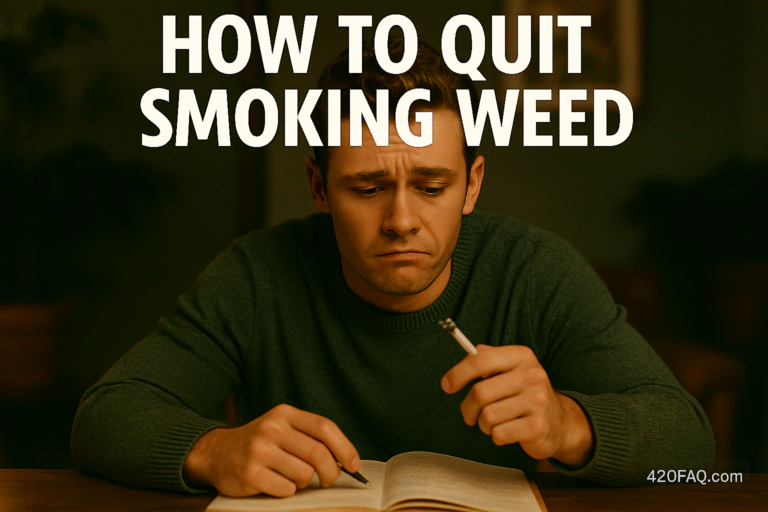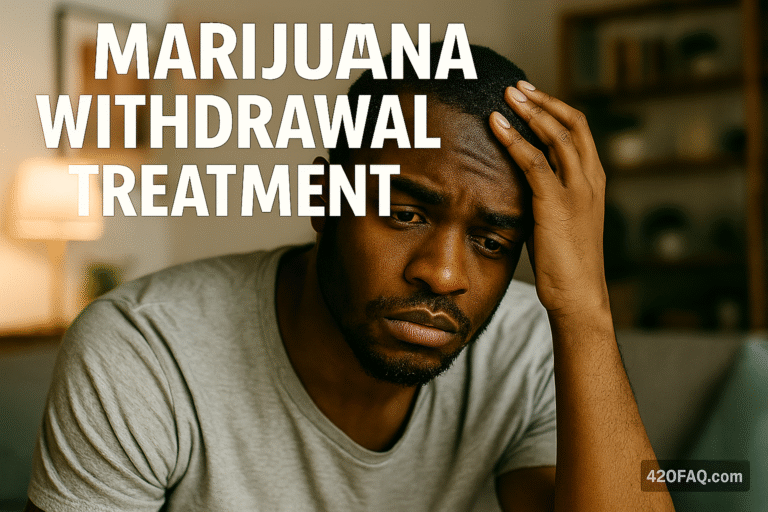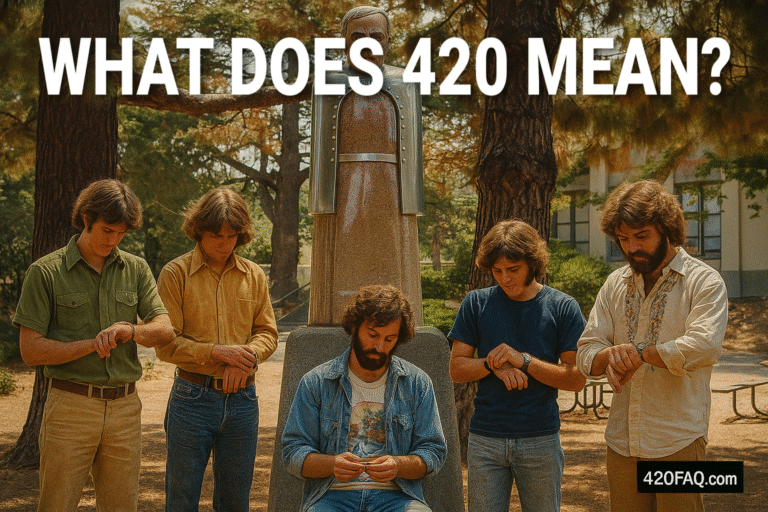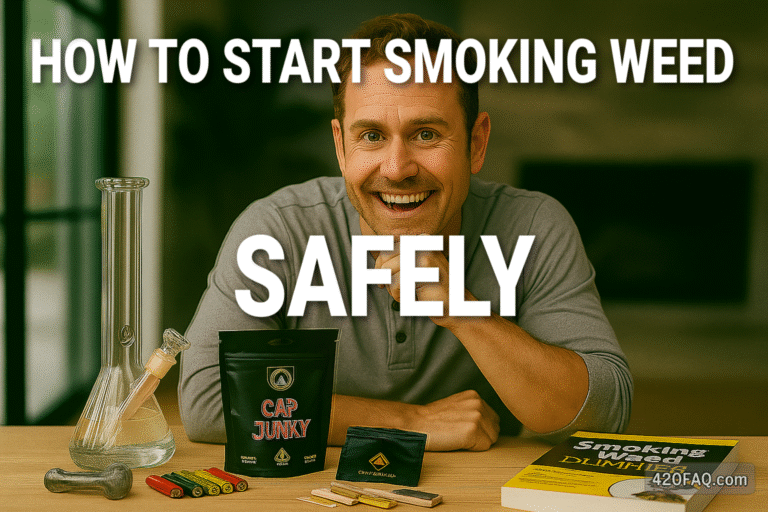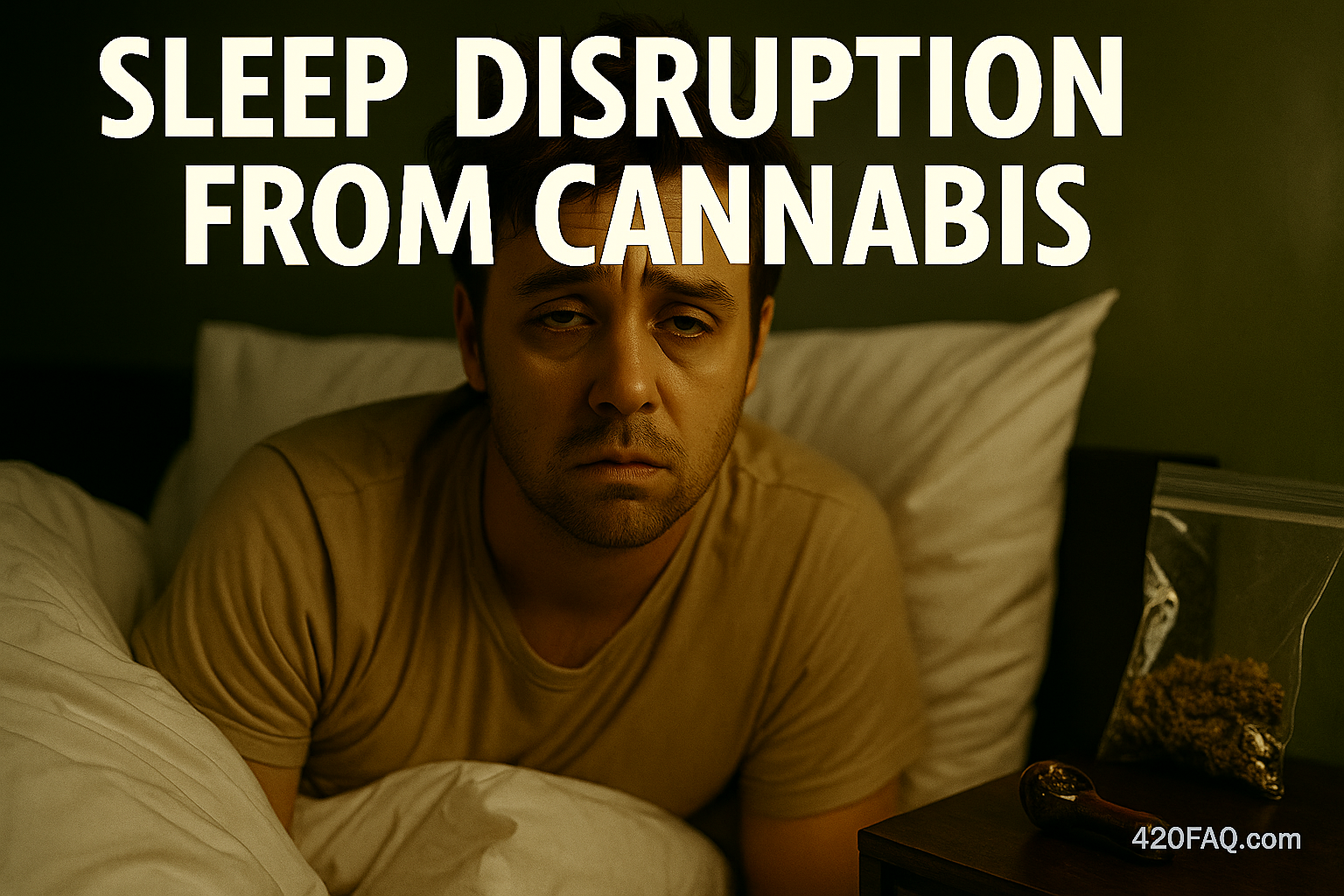
Sleep Disruption From Cannabis
Understanding how cannabis affects sleep requires separating short-term effects from long-term patterns. Some people fall asleep faster with THC (tetrahydrocannabinol), yet chronic use often alters sleep architecture—especially REM (rapid eye movement) and slow-wave sleep—creating a rebound of insomnia and vivid dreams during breaks. The goal here is clarity: what changes, for whom, and what to do about it.
How Cannabis Interfaces With Sleep Biology
Cannabis modulates the endocannabinoid system (ECS), which helps regulate circadian rhythm, arousal, temperature, and stress responses. THC is a CB1 receptor partial agonist that can acutely decrease sleep latency (time to fall asleep) and suppress REM. CBD (cannabidiol) is not sedative in a simple, linear way; low–moderate doses can feel alerting for some, while higher doses may reduce nighttime awakenings in others. Terpenes (like myrcene and linalool) and set/setting further shape outcomes.
Short-Term Effects (First Uses, Occasional Nights)
In the near term, many users report: • Faster sleep onset, especially with inhaled THC taken 1–2 hours before bed. • Reduced REM proportion that night, with fewer dreams recalled. • Potential next-day grogginess (“hangover”) at higher doses or with residual intoxication. Acute benefits tend to be dose-dependent: beyond a modest threshold, THC is more likely to fragment sleep, increase heart rate, dry the mouth, and boost nighttime awakenings.
Chronic Use, Tolerance, and Sleep Architecture
With repeated nightly THC, the brain adapts. Tolerance to “fall-asleep faster” builds, REM suppression can persist, and total sleep may not improve—and can worsen—over time. Long-term patterns are linked to shortened sleep duration, poorer efficiency, and more insomnia complaints in some cohorts. For a research overview from one academic group, see Sleep deficits linked to chronic cannabis use.
Withdrawal and REM Rebound (Breaks, T-Breaks, Quitting)
Stopping after regular use commonly triggers a transient syndrome that starts within 24–72 hours, peaks around days 2–7, and often eases within 2–4 weeks: • Insomnia, frequent awakenings, night sweats • Intense or “movie-like” dreams and nightmares (REM rebound) • Irritability, anxiety, reduced appetite The vivid-dream phase reflects REM restoration rather than damage; it typically fades as sleep stabilizes.
Dose, Timing, and Chemotype: Why Results Differ
• Dose: Low–moderate bedtime THC may shorten sleep latency; high doses tend to fragment sleep and raise next-day sleepiness. • Timing: Using within 2 hours of lights-out maximizes acute effects; earlier evening dosing (or skipping some nights) reduces tolerance accumulation. • Route: Inhaled forms act fast and wear off sooner; edibles can spike late, causing 3–5 a.m. awakenings. • CBD: May reduce REM behavior disorder and anxiety in some contexts, but can also be alerting at lower doses. • Terpenes: Myrcene, linalool, and terpinolene are often described as “sedating” in blends, but individual response varies.
Who’s Most Vulnerable to Sleep Disruption?
• Teens/young adults: Still-maturing sleep/circadian systems are more easily perturbed by nightly THC. • People with insomnia: Short-term relief can mask a cycle of dependence/tolerance that worsens baseline sleep. • OSA (sleep apnea): Cannabis is not a treatment; airway tone and CO₂ responses are complex. Standard therapies (CPAP, weight management) remain first-line. • PTSD/anxiety: Some patients report fewer nightmares with carefully titrated regimens, yet heavy nightly use still risks rebound insomnia on cessation. • Pain conditions: Analgesia may help sleep indirectly; distinguish pain relief from hypnotic effects to avoid dose creep.
Interactions and Safety Notes Relevant to Sleep
Combining THC with alcohol, benzodiazepines, Z-drugs, or opioids compounds sedation and impairs airway reflexes and cognition. Late, high-THC sessions increase parasomnias (sleep-walking–like behaviors) for susceptible users. Driving risk rises the morning after heavy or late ingestion—especially edibles with long tails—even if you “feel fine.”
Myths vs. Reality
• “Weed guarantees better sleep.” Sometimes at first; not reliably over months. • “CBD always makes you sleepy.” Not universally—dose and individual biology matter. • “Edibles are the best for insomnia.” They can overshoot and fragment the second half of the night. • “If I stop, I’ve broken my brain.” Withdrawal insomnia and vivid dreams are common, temporary, and typically self-resolving.
Practical Harm-Reduction for Cannabis Users
• Keep nights off: Avoid nightly use; reserve for particularly bad nights to slow tolerance. • Right-size the dose: Aim for the lowest effective THC, especially if combining with CBD. • Move dosing earlier: 2–4 hours before bed, not at lights-out—especially for edibles. • Standard sleep hygiene: Fixed wake time, dark/cool room, screens off 60 minutes before bed, morning light exposure, caffeine cutoff 8+ hours before bed. • Plan breaks: Expect 1–3 weeks of bumpy sleep. Use non-drug supports (CBT-I strategies, wind-down routines, breath work). • Track the basics: Sleep diary or wearable trends can reveal fragmentation you don’t notice subjectively.
Clinical Guidance and When to Get Help
If insomnia persists >3 months, if you snore loudly or stop breathing at night, or if anxiety/depression escalates during changes in use, talk with a sleep clinician. A clinician’s take on indications/contraindications is summarized here: Cannabis and sleep disorders. Evidence for specific diagnoses (chronic insomnia, OSA, RLS, circadian disorders) remains mixed; proven therapies like CBT-I and PAP (for apnea) should not be displaced.
Research Snapshot and Unknowns
We have decent short-term lab data (sleep latency ↓, REM ↓ after THC) and consistent observational signals linking chronic, heavy use to worse sleep quality. Uncertainties remain about long-horizon cognitive/affective outcomes by dose, age of initiation, and product profiles (THC:CBD ratios, terpenes). Better randomized, long-duration trials—especially in real-world dosing—are still needed.
Frequently Asked Questions About Cannabis & Sleep
Why do I get vivid dreams when I stop?
THC often suppresses REM. When you stop, REM rebounds for 1–3 weeks, producing intense dreams. This is expected and temporary.
Can I use cannabis every night without consequences?
Nightly use commonly builds tolerance and can degrade sleep architecture over time, increasing the odds of withdrawal insomnia later.
Is CBD a safer sleep aid?
CBD can help some people (especially for anxiety), but effects aren’t universally sedating and results vary by dose and product.
Why do edibles wake me at 3–5 a.m.?
Slow absorption and late peaks can fragment second-half sleep, especially with higher doses.
How long until my sleep normalizes after quitting?
Most people improve over 2–4 weeks; some heavy, long-term users take longer. Good sleep hygiene and CBT-I help.
Does strain type matter?
Chemotype matters more than marketing names. Lower THC, balanced THC:CBD, and certain terpene profiles may be gentler at night.
Is it dangerous with sleep apnea?
Cannabis is not a treatment for OSA and can complicate sedation/arousal. Treat apnea with proven therapies first.
What dose should I try for sleep?
There’s no universal dose. Start low, avoid nightly patterns, and stop increasing if awakenings or grogginess rise.
Can daytime use affect my sleep?
Yes—large daytime doses can shift circadian cues and increase nighttime fragmentation.
How do I transition off nightly cannabis?
Taper frequency (e.g., every other night), move dosing earlier, add non-drug supports, accept a short withdrawal window, and keep a fixed wake time.

